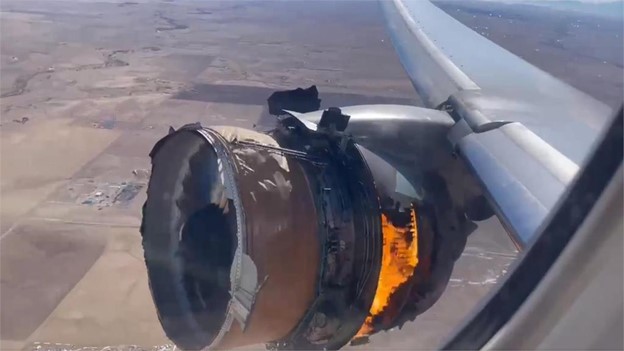The startle response is a person’s voluntary physical protection against accidents or serious events. If the pilot believes the situation is serious or believes it poses a significant danger, he will experience extreme stress.
Faced with a sudden unexpected stimulus, everyone will have a startle response, including the body trying to stay away from the stimulus, arm and leg muscle contraction, and frequent blinking, accompanied by increased blood pressure and faster breathing. People’s physical instincts begin to make the choice to survive either fight or run away. However, the pilot, especially the captain, shoulders the important task of ensuring the safety of passengers’ lives and property.
How can they better face the shock factor in flight?
In-flight shock events refer to unexpected and sudden violent events in flight, which may be abnormal aircraft attitudes, system warnings, sudden loud noises, sudden visual stimuli (such as lightning), bird strikes, sudden bumps. After being frightened, people often have faster heartbeats, soaring adrenaline, increased sweating, and even screaming. When a serious threat is sensed, people’s fright begins to turn into fear. In the face of a frightening incident, pilots may lack communication, the cockpit roles may be chaotic, and workload management may be improper, thereby threatening flight safety.
If the pilot thinks this situation is serious or finds that it poses a great threat, he will have a severe stress response. This reaction may be temporary, or it may last for a long time. Of course, the longer the duration, the greater the negative impact on flight safety. In addition, after the startle occurs, a thirty to sixty seconds performance degradation is observed in ordinary tasks (such as simple arithmetic calculations) that a person does.
Expert are saying the body responds with increased activity such as:
Cardiovascular System: Increased blood flow to the brain, muscles, and limbs through the cardiovascular system (more CO2). Coronary arteries widen as the heart beats faster and harder.
Lungs System: Lungs take more oxygen and release more CO2, resulting in an increase in respiratory rate.
Hormones System: To activate the reaction, the adrenal glands release adrenalin, and the liver releases extra sugar for energy.
Muscles: Tense up in anticipation of action, they are paralyzed by fear when face with fearful situations. Our primitive brain takes over and immobilizes us.
Urination System: Sweating increases as heat loss accelerates.
The Nervous System: We think less and respond more naturally as our brain activity changes.
What can be done as a flight crew to improve startle performance?
In this kind of situation, your brain will activate your knowledge, is good to know very well the aircraft you fly. Use all your skills, be proactive and focus on the Emergency. Don’t forget, make FORDEC, follow the standard procedures, and use CRM. Apply Threat and Error Management Strategies. And the last step is to prepare mentally for this situation and use Situational Awareness.

STARTLE OR SURPRISE?
Since the physical effects of startle and surprise are identical, they can be misunderstood. People may also be shocked and surprised whenever they are faced with a difficult situation.
“According to the accident report, pilots”
Airbus 330 – Air France Flight 447 – Atlantic Ocean 2009
An Airbus 330 was cruising over the Atlantic Ocean at Flight Level 350 (35,000 ft) during thunderstorm activity. Pilot tubes were obstructed due to ice crystals. The autopilot was turned off. Despite auditory, visual, and tactic signs of a stall, the crew behaved incorrectly, and the plane quickly descended. After initial signs of the aerodynamic stall, the plane crashed into the Atlantic Ocean 3-4 minutes later. According to the accident report, pilots’ misevaluation caused by the startle effect played a role in the incident.

